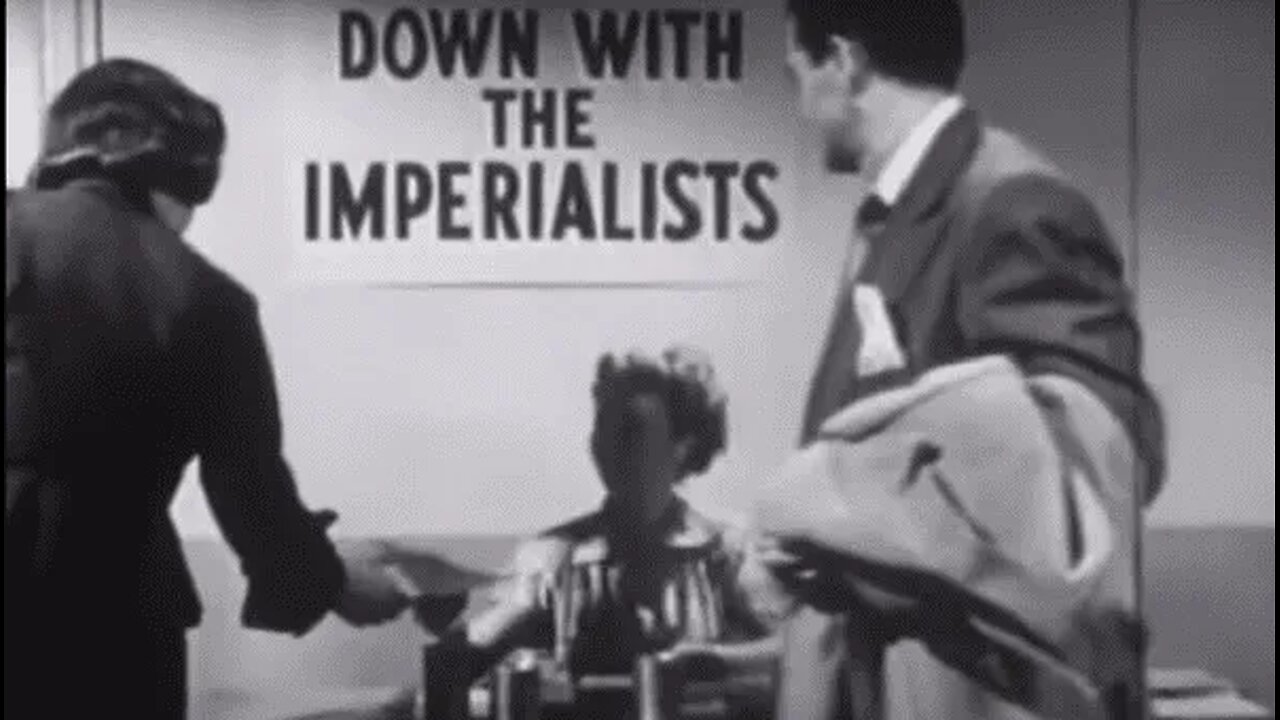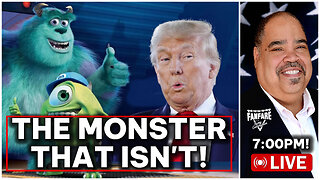Premium Only Content

How to Spot a Communist – An Armed Forces Information Film - A great piece of history.
The military offers guidance on recognizing individuals with communist beliefs. Unveiling a Communist - An Educational Film by the Military - A significant piece of history shedding light on identifying communist sympathizers. Understanding the Red Menace - A Military Educational Video - An insightful resource for recognizing communism in society. Enhancing national security by educating on spotting communist ideologies. Delving into the past to understand the present - A Military Educational Video on identifying communism. Uncovering the hidden threats - A Military Educational Video on spotting communist influences.
In 1955, the United States was entering the final stages of McCarthyism or the Second Red Scare. During this low point in American history, the US government looked high and low for Communist spies. Entertainers, educators, government employees and union members were often viewed with suspicion, and many careers and lives were destroyed by the flimsiest of allegations. Congress, the FBI, and the US military, they all fueled the 20th century version of the Salem Witch trials, partly by encouraging Americans to look for Communists in unsuspecting places.
In the short Armed Forces Information Film above, you can see the dynamic at work. Some Communists were out in the open; however, others “worked more silently.” So how to find those hidden communists?
Not to worry, the US military had that covered. In 1955, the U.S. First Army Headquarters prepared a manual called How to Spot a Communist. Later published in popular American magazines, the propaganda piece warned readers, “there is no fool-proof system in spotting a Communist.” “U.S. Communists come from all walks of life, profess all faiths, and exercise all trades and professions. In addition, the Communist Party, USA, has made concerted efforts to go underground for the purpose of infiltration.” And yet the pamphlet adds, letting readers breathe a sigh of relief, “there are, fortunately, indications that may give him away. These indications are often subtle but always present, for the Communist, by reason of his “faith” must act and talk along certain lines.” In short, you’ll know a Communist not by how he walks, but how he talks. Asking citizens to become literary critics for the sake of national security, the publication told readers to watch out for the following:
While a preference for long sentences is common to most Communist writing, a distinct vocabulary provides the more easily recognized feature of the “Communist Language.” Even a superficial reading of an article written by a Communist or a conversation with one will probably reveal the use of some of the following expressions: integrative thinking, vanguard, comrade, hootenanny, chauvinism, book-burning, syncretistic faith, bourgeois-nationalism, jingoism, colonialism, hooliganism, ruling class, progressive, demagogy, dialectical, witch-hunt, reactionary, exploitation, oppressive, materialist.
This list, selected at random, could be extended almost indefinitely. While all of the above expressions are part of the English language, their use by Communists is infinitely more frequent than by the general public…
Rather chillingly, the pamphlet also warned that Communists revealed themselves if and when they talked about “McCarthyism,” “violation of civil rights,” “racial or religious discrimination” or “peace.” In other words, they were guilty if they suggested that the government was overstepping its bounds.
According to Corliss Lamont’s book, Freedom Is As Freedom Does, the First Army withdrew the pamphlet after Murray Kempton slammed it in The New York Post and The New York Times wrote its own scathing op-ed. In 1955, the press could take those risks. The year before, Joseph Welch had faced up to Joe McCarthy, asking with his immortal words, “Have you no sense of decency, sir? At long last, have you left no sense of decency?
-
 0:26
0:26
Xghzqtk
4 days agoPutin arrives in Alaska.
11 -
 2:03:42
2:03:42
Inverted World Live
8 hours agoBigfoot Corpse Coming to the NY State Fair | Ep. 94
94.8K19 -
 6:16:23
6:16:23
SpartakusLIVE
9 hours ago$1,000 Pistol Challenge || #1 ENTERTAINER of The EONS Eradicates BOREDOM
71.3K2 -
 2:33:37
2:33:37
TimcastIRL
6 hours agoTrump Orders Review of Smithsonian For Being Woke & Out of Control | Timcast IRL
170K53 -
 3:09:10
3:09:10
Barry Cunningham
10 hours agoPRESIDENT TRUMP HAS TAKEN THE MONSTER AWAY FROM THE LEFT! HORROR STORIES WON'T WORK ANYMORE!
74.6K76 -
 1:29:55
1:29:55
WickedVirtue
4 hours agoLate Night Fortnite w/ Friends
43.3K -
 3:34:06
3:34:06
This is the Ray Gaming
5 hours ago $0.55 earnedCould you be? Would you be? Won't you be my RAYBOR? | Rumble Premium Creator
25.7K -
 1:46:52
1:46:52
JahBlessGames
6 hours ago🎉Come een' and come tru' - VIBES | MUSIC | GAMES
46K -
 38:47
38:47
MattMorseTV
8 hours ago $13.55 earned🔴Tulsi just CLEANED HOUSE.🔴
63.7K101 -
 6:24:06
6:24:06
Reolock
8 hours agoWoW Classic Hardcore | WE'RE BACK!!
28.1K1